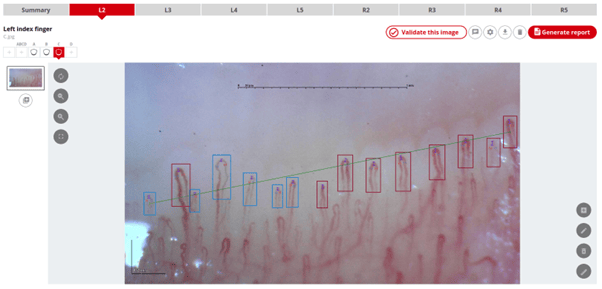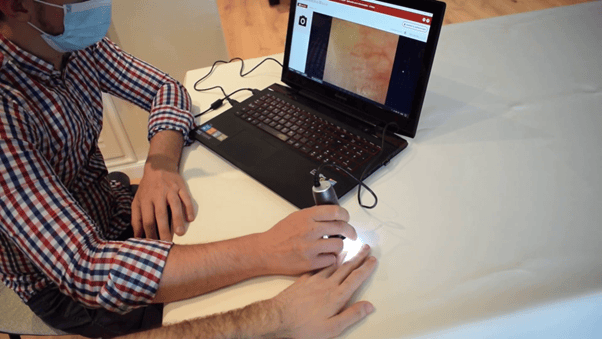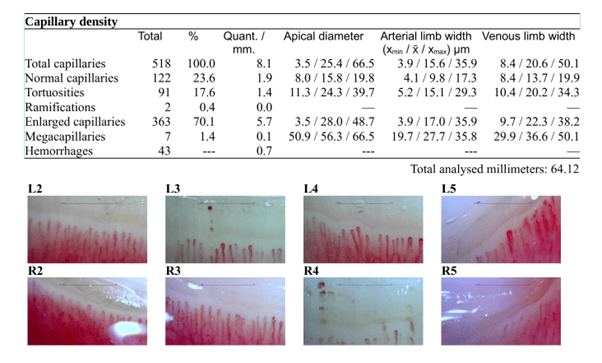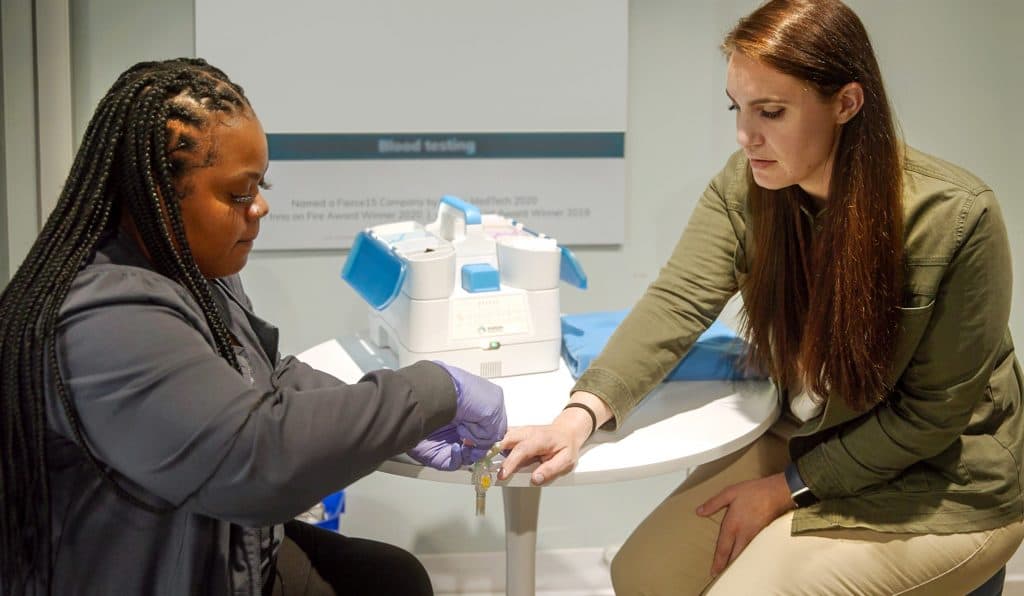
Borja Gracia is co-founder of Capillary.io, the Spanish company behind a truly innovative AI-powered capillaroscopy tool. The tech enables doctors to diagnose diseases such as Raynaud syndrome using the nailfold capillaries and supports collaboration between physicians.
Capillaroscopy dates back to 1663, when Johan Christophorous Kolhaus first used a microscope to observe these tiny blood vessels. The technique really came into its own in the 19th century, thanks to the work of Maurice Raynaud, the French doctor who discovered Raynaud syndrome.

Borja Gracia
Health Tech World got in touch with Borja to learn more about the science behind capillaroscopy and how Capillary.io is advancing the field through AI and cloud technology.
What inspired you to create Capillary.io?
I began to perform nailfold capillaroscopy examinations in 2011. I realised that it was an exceptional means of assessing the body’s microcirculation in a very simple and above all non-invasive way.
It was also clear that the technique was still totally subjective, despite being in the 21st century and there being numerous innovative systems in other areas of artificial intelligence.
How do nailbed capillaries reflect disease? What is occurring in the body?
Capillaries are the smallest vessels in the body. Although they are often found in internal areas where we need biopsies for their analysis, they are also found in the eyes and fingers, where they can easily be seen with just a microscope.
All diseases that produce alterations at the microcirculation level, such as autoimmune diseases and diabetes, COPD and even SARS-CoV2 infection, can be assessed by this technique.
However, up until now, the test has been totally subjective, allowing only qualitative assessments that, although useful, are very limited.

Capillaroscopy procedure – The capillaries at the base of the nails are observed using a portable USB microscope connected to the computer.
What are the advantages of Capillary.io over manual capillaroscopy?
It standardises the test. Our technology opens the way to new analyses where not only the presence of alterations is assessed but also various metrics of each of these alterations, such as capillary density and size. Capillary.io offers a data-driven approach to capillaroscopy.
It also makes the process of a capillaroscopy much easier and faster for the physician thanks to our highly-specialised software tools.
Our images show, by means of square figures, each of the visualised capillaries, measured in each of its branches and with a colour code and a small sign that reveals its morphology.
A detailed report shows the distance analysed, the amount of each of the observed capillary types and their proportion and the average capillary size of each of the alterations.

Statistics of a complete capillaroscopy generated by Capillary.io
How did you train the algorithm?
The capillary.io models were trained with images manually labelled and compared by several expert capillaroscopists.
The software models are regularly updated and improved by adding new images to the training and test sets.
What response have you received from clinicians using your device?
We’ve received lots of positive feedback praising the technology, particularly for its ease of use and the ‘complete and useful’ AI analysis.
One user said: “It is an easy software that allows you to start performing capillaroscopic analysis, and it shows you quickly the amount of megacapillaries and capillary density (among much other measures) in Raynaud’s patients. You need no previous knowledge of capillaroscopy.”
Another said:
“We can obtain reports with clinical parameters in a quick and simple way that guide us in the diagnosis, for example, of diseases such as scleroderma, studying the microcirculation of the capillaries near the base of the patient’s nail.”
The technology is backed by academic research. What does your paper show?
Our system was compared to the ‘gold standard’ of capillaroscopy. The paper validated that Capillary.io recognised more than 80 per cent of the identified capillaries.
It shows how we organised and processed our manually-labelled data to be used for training several deep learning models for different tasks such as detecting and measuring capillaries.
We combined these models to produce an in-detail analysis of each capillaroscopic image and a report of the metrics.
Our paper showed that it’s possible to use deep learning to automatically analyse capillaroscopic images with high recall and precision, resulting in a practical and useful tool to be used by physicians in routine capillaroscopy examinations.
What can we expect from Capillary.io for the remainder of 2022?
We are currently finishing a new project that will enable the software to be validated externally.
It will also allow for the creation of new automated databases (CAPIDATA) that broaden the horizons of capillaroscopic analysis, not only in autoimmune diseases but in all diseases in which the microvasculature is embedded.
Capillary.io – Capillaroscopy made quick, simple and objective






